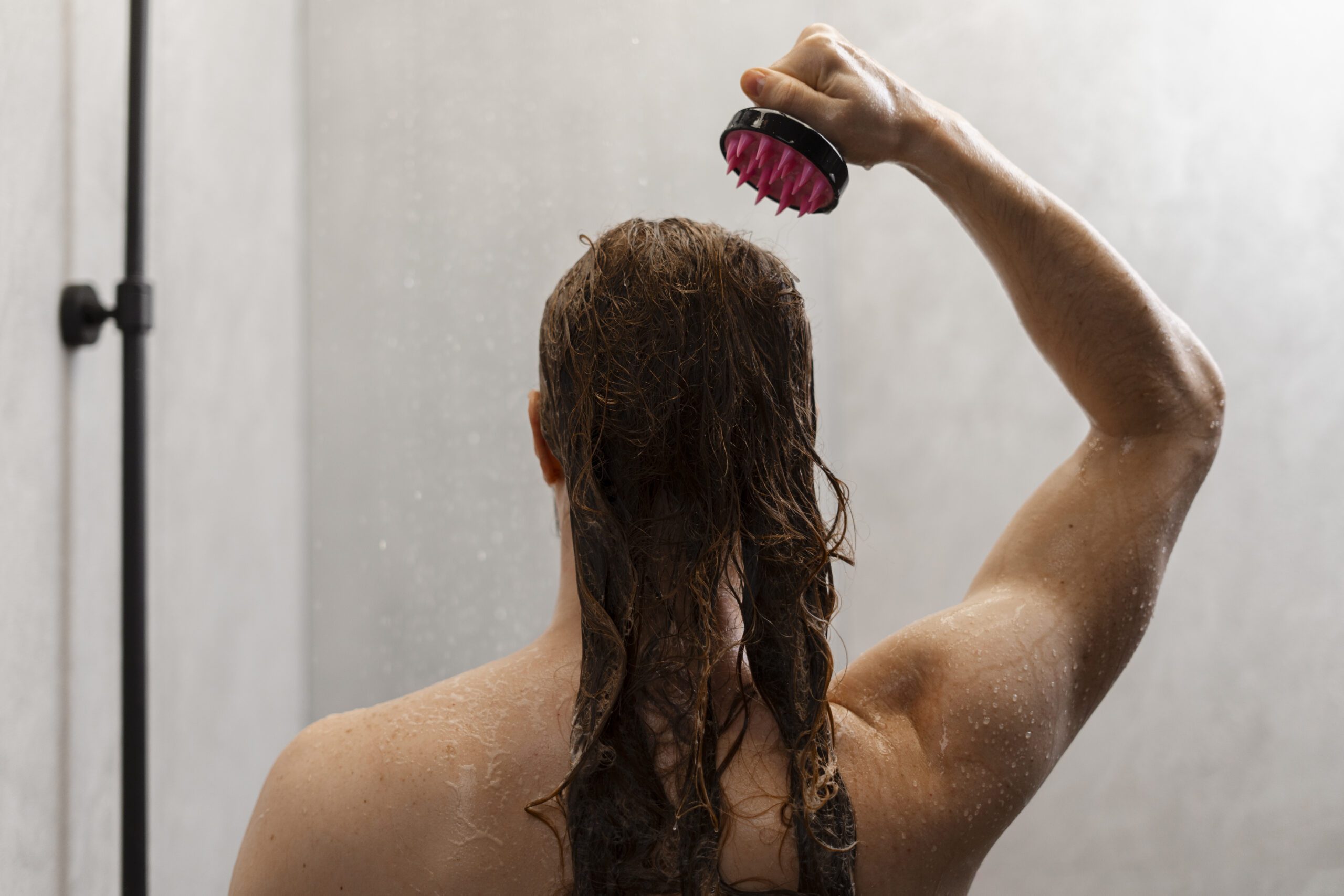What Pictures of Normal Hair Lossing in the Shower Reveal.
- Sometimes, seeing pictures of what hair loss should look like can be very illuminating when using that as a visual comparison of what normal is. Knowing what normal looks like can give you peace of mind, especially with your shedding, so you can tell whether or not this is normal.
- Normally, normal hair loss would present as clumps of 20 to 30 strands. For a woman with long hair, the clump may appear larger. That has to be considered against the fact that there is an accumulation of daily shedding if you haven’t brushed your hair for a while.
- A useful clue is to try and observe a trend and some level of predictability over successive showers. Some variability will occur; however, drastic shifts or a general increase might deserve further scrutiny.
Factors Affecting Hair Loss Several factors will influence how much hair falls.
- Inheritance determines your fall patterns more than many other attributes. You could very well be inclined to observe a pattern where your relatives exhibit the same form of thinning or hair loss.
- Another factor is stress, which may contribute to increasing the rate of hair loss. Stress hormones alter the hair growth cycle so that more hair follicles fall into the shedding phase. Introducing techniques that reduce stress can be of benefit in reducing its effect on your hair health.

- Nutritional deficiency also affects hair health. A diet deprived of the necessary vitamins and minerals weakens hair strands and causes more shedding. In this way, a balanced diet with proteins, vitamins, and minerals is important for having healthy hair.
-
Normal Hair Loss vs. Alopecia
- It is the difference between natural hair shedding and alopecia that indicates abnormal loss of hair. Normal shedding occurs in a cycle as part of the hair cycle. Alopecia has larger hair loss due to autoimmune reactions, hormonal imbalance, or other infection-like conditions.
- This means hair loss in alopecia is likely accompanied by bald patches, but it could also simply present as overly excessive thinning. One would thus require visiting a healthcare provider or a dermatologist to suspect it and get a proper prescription or a cure for this condition after diagnosing it when it was young and relatively fresh.
-
How Hair Loss Preparations Influence Shedding
- Hair loss can also be caused by the products you use. Some shampoos, conditioners, and styling products contain so much harsh chemical content that it damages the hair follicle and causes shedding. So, use products that contain natural ingredients and are not harsh on your scalp or strands.
- The left behind residues by too much of a product or insufficient rinsing will block your hair follicles and, accordingly may retard the growth of hairs; rinse well during bathing avoids the accumulation of such residues and thereby gives a healthy scalp condition.
- When there’s hair fall to the maximum; consider changing to sulfate-free shampoos or something to make extra strength for your hair that protects hair fall considerably both types do decrease much hair damage in your locks while retaining more.
-
Minimize Hair Loss in the Shower
- This might seem like a far-fetched idea, but there are several simple ways to prevent excessive hair loss in the shower. First, use milder techniques when shampooing and combing your locks. Use a wide-tooth comb to cause less damage while removing tangles and stop using the hairdryer on high blast and towel dry properly.

- Scalp massage enhances blood circulation; similarly, it enables you to ensure that there is still adequate circulation for hair to continue growing. Massaging in good oils makes your scalp stay soft and silky.
- Limit your utilization of heat styling tools to refrain from adding more stress to your hair. When utilizing such tools, ensure that you apply heat protection products before doing so to prevent damage from the tools.
When to See an Expert
- It is perfectly normal to lose some hair, and there are signs when it’s necessary to see a professional. For example, if you notice sudden, excessive shedding, bald patches, or severe thinning, you should get medical attention.
- A dermatologist or trichologist can observe the condition of your hair and scalp and provide you with professional advice according to your needs. They can give you some treatment or lifestyle changes for possible causes of hair loss.
- Check-ups are great for keeping your hair healthy and preventing potential problems from becoming worse. If you have issues with hair loss, visit a healthcare provider.
At times, hair loss can be very confusing and challenging to understand. However, knowledge of what is normal and what isn’t will surely offer some solace. By being aware of the pattern in hair fall in your case as well as taking measures to prevent bad hair fall, you’ll find this journey much more manageable.








